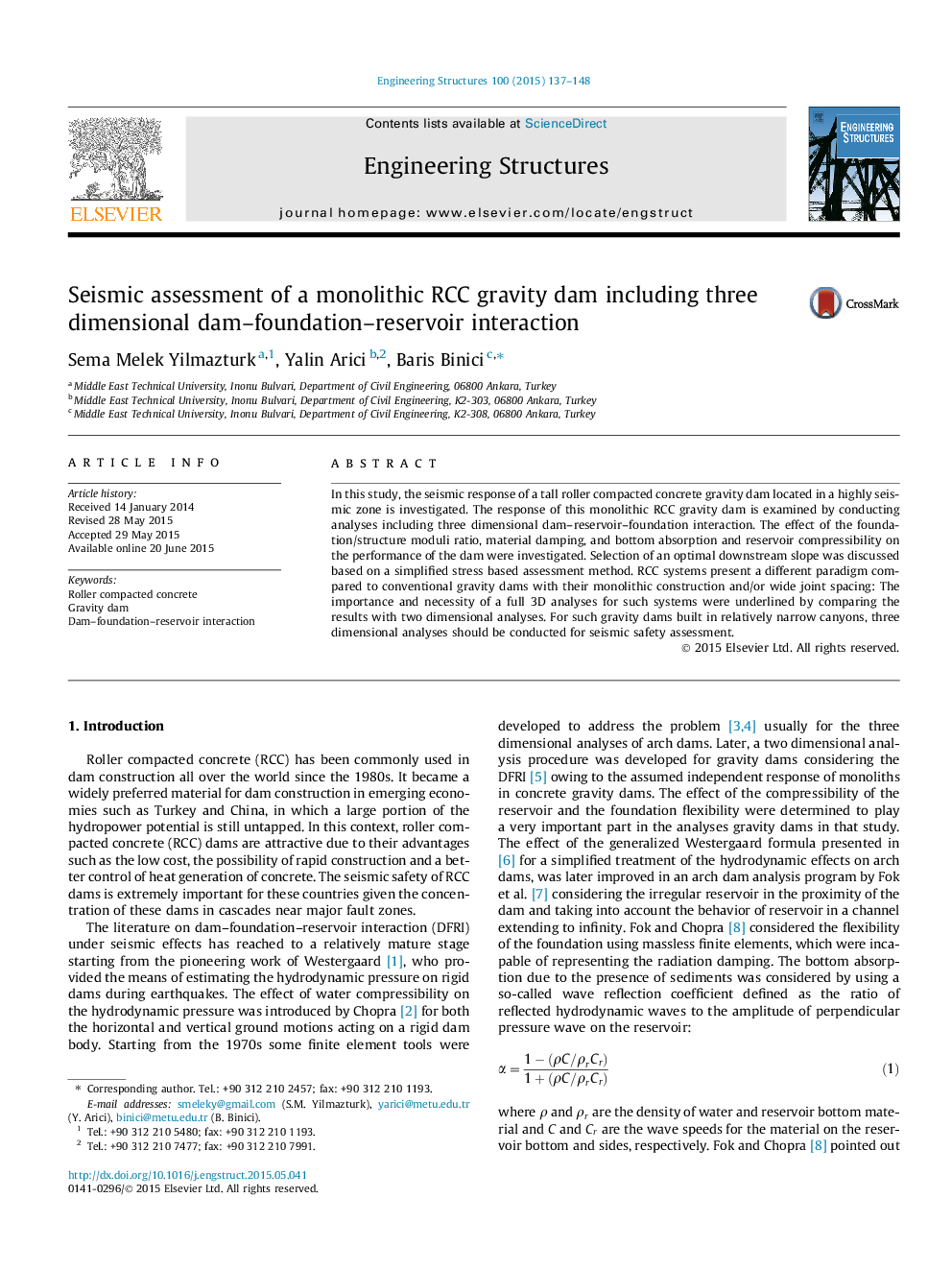| کد مقاله | کد نشریه | سال انتشار | مقاله انگلیسی | نسخه تمام متن |
|---|---|---|---|---|
| 266106 | 504344 | 2015 | 12 صفحه PDF | دانلود رایگان |

• RCC dams are built with very few, interlocking or no construction joints.
• The importance of 3D analyses for dams located in narrow canyons is shown.
• 2D analyses underestimate stresses significantly compared to 3D analyses.
• Effects of compressibility or wave reflection are not as significant as arch dams.
In this study, the seismic response of a tall roller compacted concrete gravity dam located in a highly seismic zone is investigated. The response of this monolithic RCC gravity dam is examined by conducting analyses including three dimensional dam–reservoir–foundation interaction. The effect of the foundation/structure moduli ratio, material damping, and bottom absorption and reservoir compressibility on the performance of the dam were investigated. Selection of an optimal downstream slope was discussed based on a simplified stress based assessment method. RCC systems present a different paradigm compared to conventional gravity dams with their monolithic construction and/or wide joint spacing: The importance and necessity of a full 3D analyses for such systems were underlined by comparing the results with two dimensional analyses. For such gravity dams built in relatively narrow canyons, three dimensional analyses should be conducted for seismic safety assessment.
Journal: Engineering Structures - Volume 100, 1 October 2015, Pages 137–148